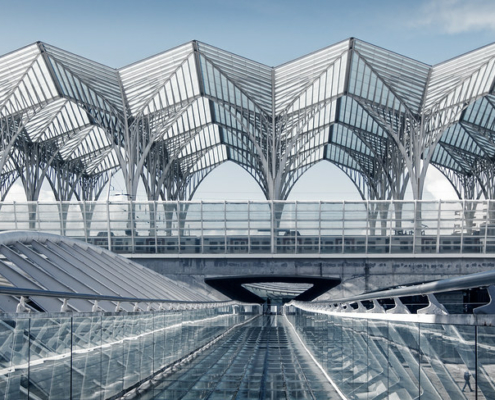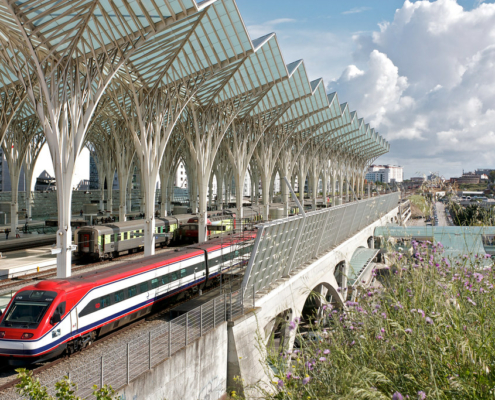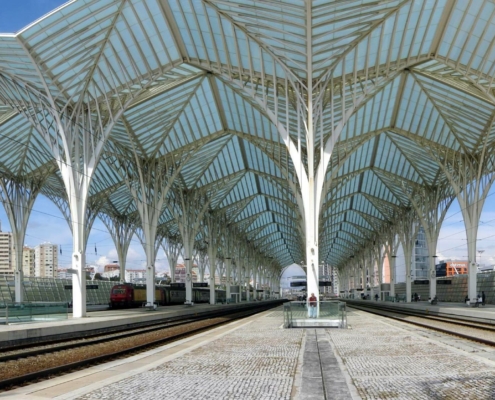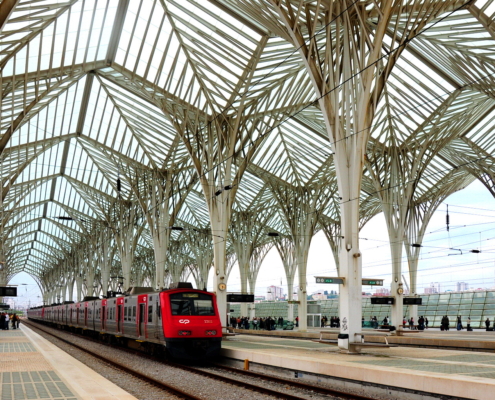"
Going beyond the competition brief, Calatrava proposed piercing the embankment to establish a link between the previously separated areas of the Olivais District. The existing Avenida Berlin, perpendicular to the embankment, was extended to the river's edge. The new Reciproca Avenida, a matching but slightly oblique avenue, was built on the northern edge to establish an important east-west axis penetrating the Expo site. This solution provided clear and easy pedestrian access among the various transport modes, while serving as the ordering principle for the entire proposal. Creation of the two flanking avenues, which define the boundaries of the pedestrian precinct, was a grand gesture involving the elevation of the station and its displacement to the north of the originally designated site. The proposal thus ventured into the realm of urban planning: a decision that not only won the support of the Expo organizers but also of the city's planning authorities, who up to that point had not been involved. The strategic order of the design helped to achieve the aim of giving the Olivais District a function beyond Expo. Calatrava placed the platforms on a bridge structure, comprised of five parallel rows of twinned arches, 256 feet in total width, spanning 853 feet. The bus terminal is located immediately to the west of the station, and a complex of commercial buildings is arranged around a plaza to the east. This plaza provides access to a shopping mall, which, along with ticket counters and platform access, occupies a multi-level hall directly beneath the platforms. A park-and-ride facility and metro link are also organized below grade. Above the platforms, steel and glass 'trees' interlock to form a continuous system of transparent roofs arranged on a 56-foot-grid. The sweeping, glazed canopies of the bus terminal rise up to cover an elevated gallery, which provides access to the station above the bus lanes. This gallery, with its translucent glass-block paving, is treated as an axial, ordering element that runs through the entire complex from west to east. Conceived as Expo's primary transport connection, Oriente Station has proved to be the main component in the transformation of the whole Olivais District. It has become one of Europe's most comprehensive transport nodes: an important interchange for high-speed intercity trains, rapid regional transport, standard rail services, tram and metro networks.
"
Information provided in part by: Santiago Calatrava







